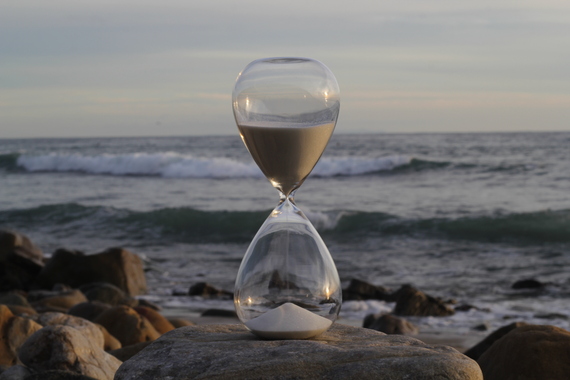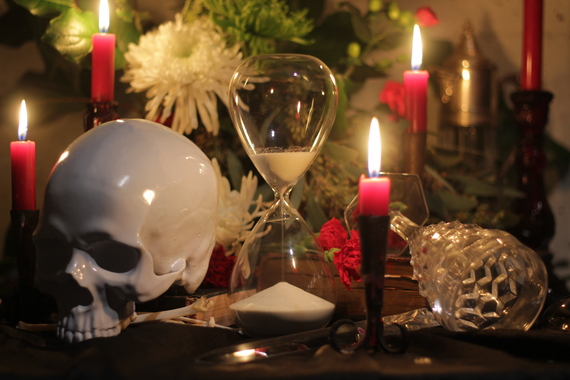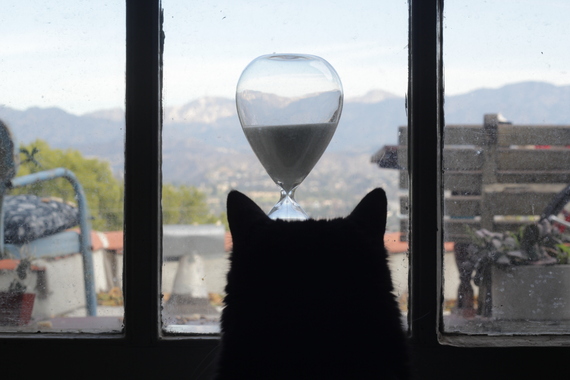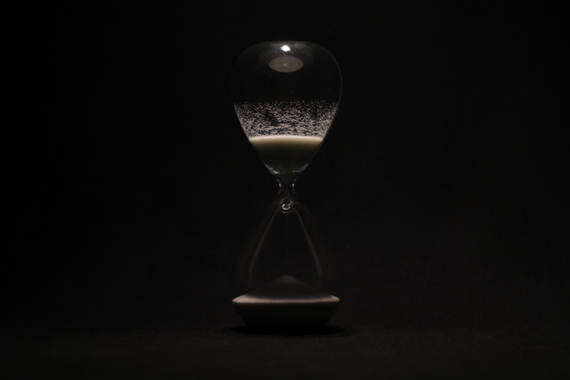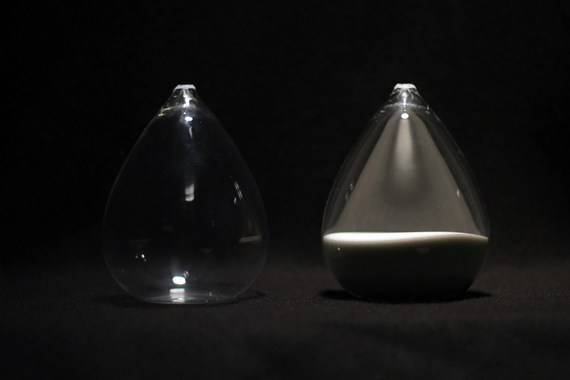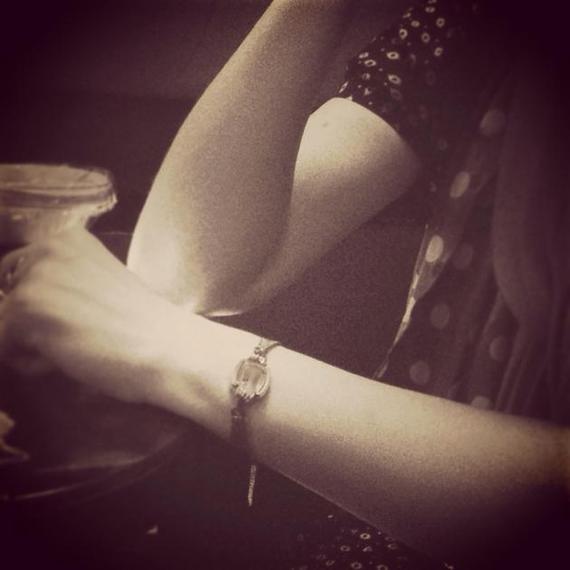Man has long been aware of the passing of what we refer to as Time. The celestial bodies traveling above us in regularity were surely the first sign to man that all things were moving forward. At some point he discovered that if he kept track of these movements and their placement eventually they would return bringing with them Spring, Summer, Fall and Winter before beginning again. Man's seasons follow a similar path with Infancy, Youth, Adulthood and Old Age. However, our seasons do not simply begin again making the keeping of our time even more crucial.
Neolithic man built monuments and structures to celebrate and interact with the sun on specific days of the year, such as the Summer Solstice and the Winter Equinox. From the earliest structures the Ring of Brodgar and the Standing Stones of Sterness in Northern Scotland and later to the more famous Stonehenge in Southern England, these sites were built with time in mind. The placement of the stones are presumed to be in harmony with the location of the sun, moon and stars of specific dates making the structures themselves act as a clock that, metaphorically speaking, only rings once or possibly twice a year.
The work I have created for Savernack Street follows the lead of these early sites in a far subtler manner. As a visitor peers into the peephole they can see an hourglass running its course at an accelerated rate. The hour's pass in two and half minutes and with each hours end the hourglass is found to be in a new location with its sands starting again. A full twenty-four hours is represented in the film with our subject moving through the day, hour by hour.
The complete program is timed to sixty minutes allowing the patient viewer to see a complete days worth of time pass by in a single hour. The hourglass is shown as the feature and the constant because it is a widely known archaic device and is almost magical and meditative to watch. It is easy to get mesmerized by the sight of the physical movement of sand as it falls into a perfect pile the top creating negative of the pile below as the grains move by the force of gravity. The slender most point of the glass structure is the key to its accuracy and its shape is visually appealing to man as well as it has long been used to describe the figures of women men desire.
Passage takes this timeless image and places it in twenty-four different scenes all taking place during the final month of 2014. As the time slips past we are taken from place to place from landscapes to domestic spaces. Its movement through the world carrying the obvious reference to the backdrops we leave to our backs as we move forward through life. This work balances between portraiture and landscape combining the two. Our subject with all its visual appeal starts again and again by my hand I am required to physically interact with the time I am recording as one would wind the key of a clock mounting its tension that will slowly release in a steady manner keeping true time until it requires the hand of man to return its tension.
The sands of an hourglass sit still encased in the elegant silver 1940s wristwatch that is the Station Gallery. The displacement of this age-old tool for telling time and its relocation of its contents has rendered it unable to perform its task. The empty space of which the sand now resides once held a mechanism that allowed us to know the precise moment of the present time. Now this beautiful timepiece is restricted to a life as a curiosity. It is not however obligated to exist as mere decoration as it may be a keeper of a great deal of thought if inquiry is made about its reasons. With hours I hope to draw ones thoughts to the inability to restrict time and how our perception of time is simply that; a perception. This work also reminds us that a tool is only effective in its totality and that the combination of half parts shall not make a whole. Often times we ignore time hoping it will some how slow and yet the older we get the years fly by at what seems like an accelerated pace.
The first portable clock or watch was made in Germany around 1500. Early watches went through various stages of innovation from 1680 to 1730, during this time the spiral hairspring was invented by the English scientist Robert Hooke. In 1759 the "Lever" watch was in vented by Thomas Mudge in London practically all watches made today are variations of the watch Mudge made with the mechanism of most watches sold today are basically unchanged from these early watches.
The wristwatch has widely been replace by the cellphone. We have far more interaction with our cellphones with text messages, social media and navigation than we previously had simply with watches. Each time we look at our phones we are confronted with the time, though this digital representation seems more abstract than that of a traditional watch with it's secondhand in constant motion. The ceaseless movement of the red second hand creates either a hypnotic mesmerizing effect or can build anxiety with each second that passes. The clicking sound associated with time passing has long been a means of (getting across) the feeling of anxiety in cinema dramatic presentation of the passing of time to our own experiences of lying awake at night with the sound of our watches ticking, persistently reminding us that the seconds continue with or without us.
From the great Kings and Conquers throughout history to early man to you yourself, we are all subjects of Time. With this force that can never be controlled of which we are merely passengers aboard we log our accomplishments and our hardships and organize memories accordingly. There are few things that are present in all cultures and all ages that are inescapable. Time may be the most powerful thing that transcends all of mans inventions and practices, due largely because of the mortality of life. If our time were not limited, or more so, if it were unlimited we may not find things in this life precious and the feeling of sentiment may not exist. With each passing day we draw closer to the end and a watch worn on the wrist is a precise reminder that this time is passing. Just as the sands slip from the one space to the next we too will one day pass.
About The Curator:
CARRIE SINCLAIR KATZ is San Francisco based interdisciplinary artist, writer, and curator whose work plays with interpersonal dynamics to create situations for participatory action. Katz holds a Masters degree in Creative Writing from San Francisco State University and an MFA in New Genres from the San Francisco Art Institute. Her projects explore a renegotiation of personal authenticity within social structures, primarily utilizing scale, archival strategies, power differentials, proxy performance, the still and moving image, and immersive installation. Her interest in the intersection between the arts and other disciplines has led her to work with a variety of collaborators, such as anesthesiologist Dr. Sesh Mumbdai of Stanford University. Their art research and writing has been exhibited at the Zero1 Biennial and published in the Columbia University periodical The Intima. As an extension of her own art practice, Katz created and directs the curatorial project SAVERNACK STREET, a gallery in the Mission district of San Francisco that is only visible through a peephole, and STATION, an art gallery within the space of her 1940s art deco wristwatch.
j.frede : Passage
January 17-March 17
Opening Reception : January 17, 5-7pm, Artist Talk at 6pm
Savernack Street
2411 24th St,
San Francisco, California
94110
An Edition of 24 full color booklets has been produced in conjunction with the exhibition and will be available for purchase at the opening.
Carrie Sinclair Katz will be in attendance at the Opening Reception for Passage and will be wearing the Station Gallery containing hours throughout the evening.

